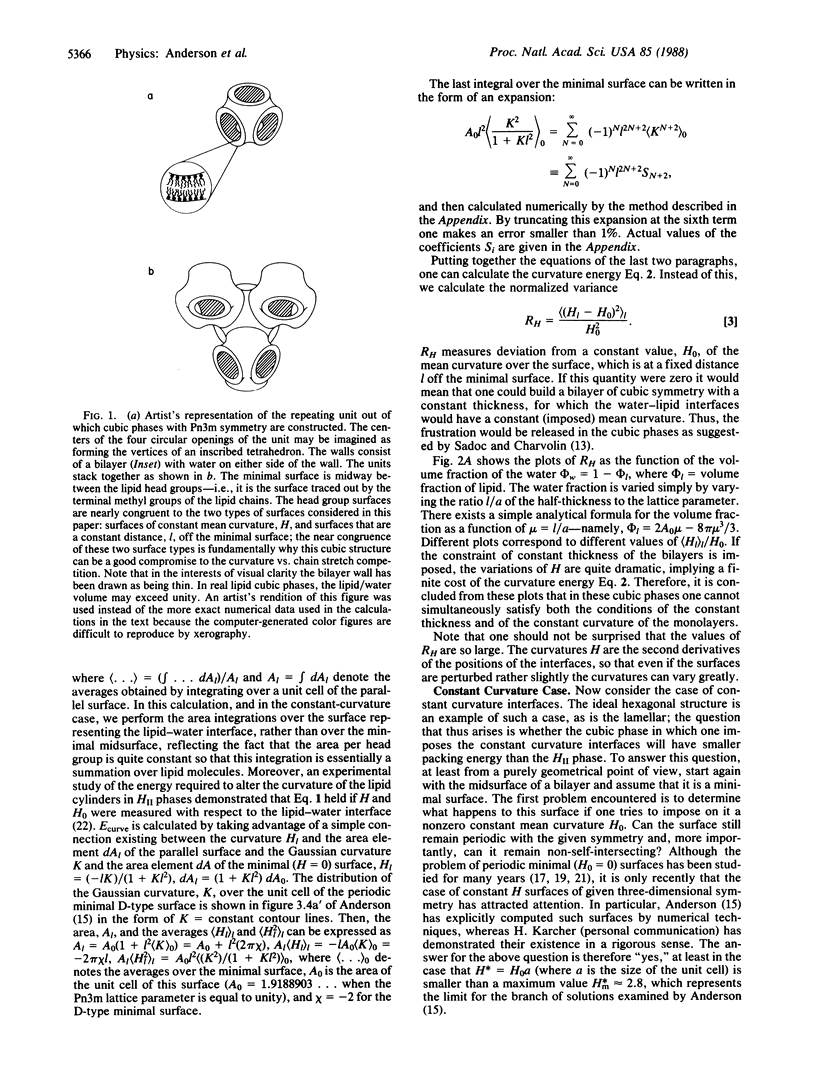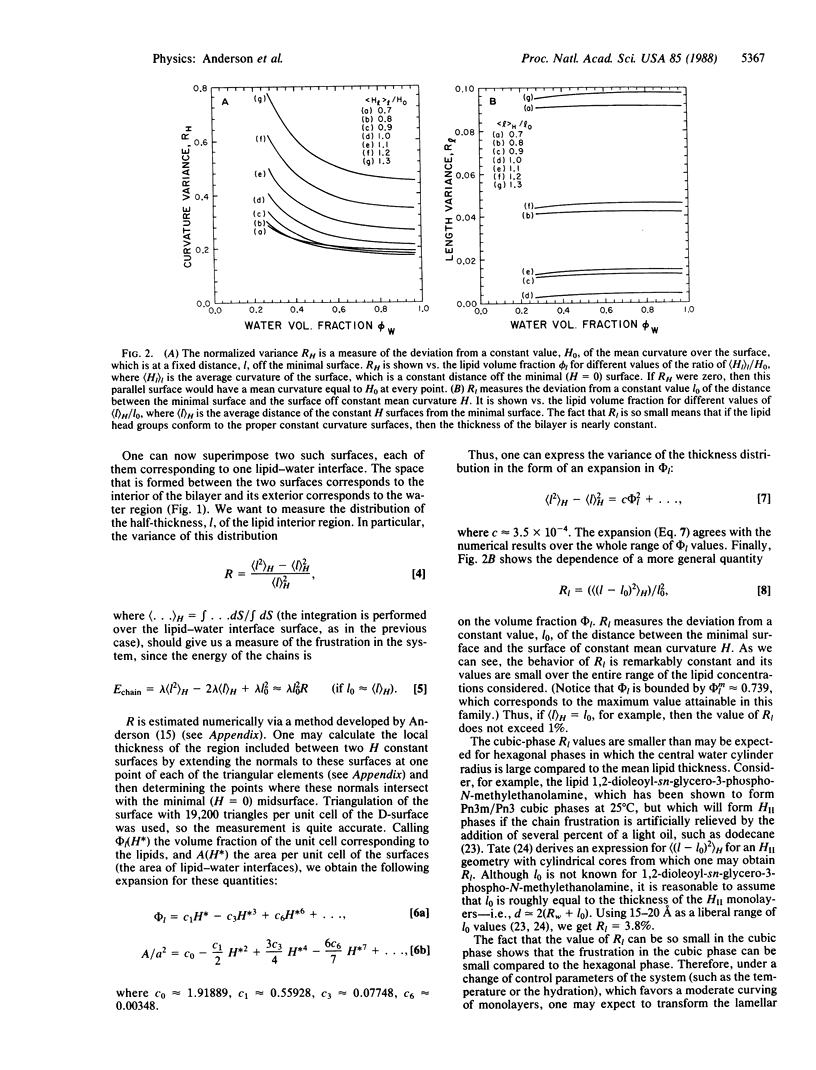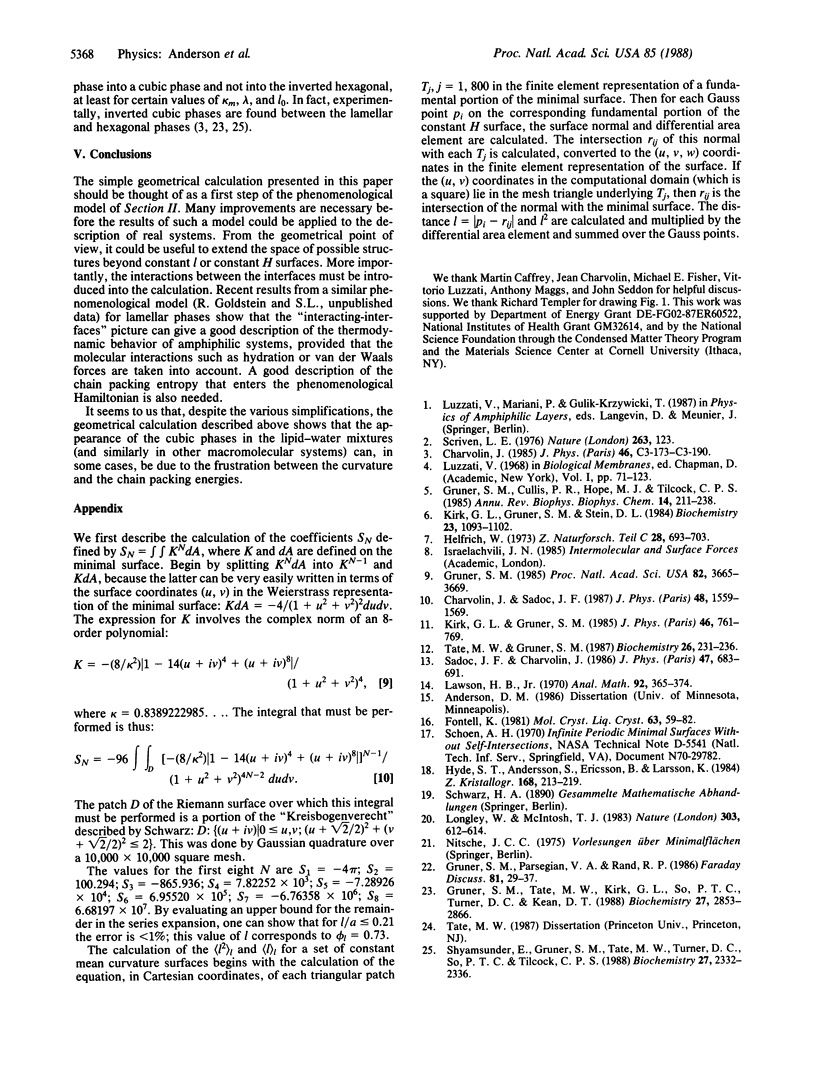Abstract
Bicontinuous cubic phases, composed of bilayers arranged in the geometries of periodic minimal surfaces, are found in a variety of different lipid/water systems. It has been suggested recently that these cubic structures arrive as the result of competition between two free-energy terms: the curvature energy of each monolayer and the stretching energy of the lipid chains. This scenario, closely analogous to the one that explains the origin of the hexagonal phases, is investigated here by means of simple geometrical calculations. It is first assumed that the lipid bilayer is of constant thickness and the distribution of the (local) mean curvature of the phospholipid-water interfaces is calculated. Then, assuming the mean curvature of these interfaces is constant, the distribution of the bilayer's thickness is calculated. Both calculations quantify the fact that the two energy terms are frustrated and cannot be satisfied simultaneously. However, the amount of the frustration can be smaller for the cubic phase than for the lamellar and hexagonal structures. Therefore, this phase can appear in the phase diagram between the other two, as observed in many recent experiments.
Full text
PDF




Selected References
These references are in PubMed. This may not be the complete list of references from this article.
- Gruner S. M., Cullis P. R., Hope M. J., Tilcock C. P. Lipid polymorphism: the molecular basis of nonbilayer phases. Annu Rev Biophys Biophys Chem. 1985;14:211–238. doi: 10.1146/annurev.bb.14.060185.001235. [DOI] [PubMed] [Google Scholar]
- Gruner S. M. Intrinsic curvature hypothesis for biomembrane lipid composition: a role for nonbilayer lipids. Proc Natl Acad Sci U S A. 1985 Jun;82(11):3665–3669. doi: 10.1073/pnas.82.11.3665. [DOI] [PMC free article] [PubMed] [Google Scholar]
- Gruner S. M., Parsegian V. A., Rand R. P. Directly measured deformation energy of phospholipid HII hexagonal phases. Faraday Discuss Chem Soc. 1986;(81):29–37. doi: 10.1039/dc9868100029. [DOI] [PubMed] [Google Scholar]
- Gruner S. M., Tate M. W., Kirk G. L., So P. T., Turner D. C., Keane D. T., Tilcock C. P., Cullis P. R. X-ray diffraction study of the polymorphic behavior of N-methylated dioleoylphosphatidylethanolamine. Biochemistry. 1988 Apr 19;27(8):2853–2866. doi: 10.1021/bi00408a029. [DOI] [PubMed] [Google Scholar]
- Helfrich W. Elastic properties of lipid bilayers: theory and possible experiments. Z Naturforsch C. 1973 Nov-Dec;28(11):693–703. doi: 10.1515/znc-1973-11-1209. [DOI] [PubMed] [Google Scholar]
- Shyamsunder E., Gruner S. M., Tate M. W., Turner D. C., So P. T., Tilcock C. P. Observation of inverted cubic phase in hydrated dioleoylphosphatidylethanolamine membranes. Biochemistry. 1988 Apr 5;27(7):2332–2336. doi: 10.1021/bi00407a014. [DOI] [PubMed] [Google Scholar]
- Tate M. W., Gruner S. M. Lipid polymorphism of mixtures of dioleoylphosphatidylethanolamine and saturated and monounsaturated phosphatidylcholines of various chain lengths. Biochemistry. 1987 Jan 13;26(1):231–236. doi: 10.1021/bi00375a031. [DOI] [PubMed] [Google Scholar]


